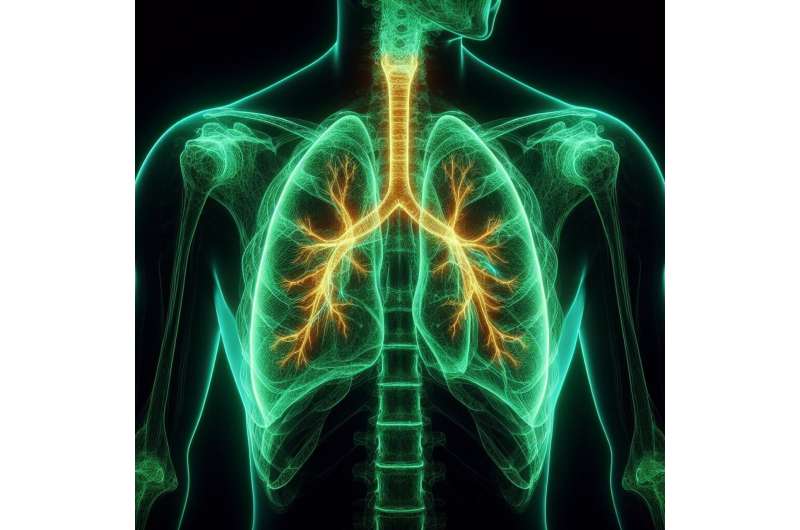New Discoveries Highlight Protein Target to Protect Lungs from Severe Flu Damage

A groundbreaking study uncovers how inhibiting a specific lung protein, Gasdermin E, can significantly reduce inflammation and tissue damage caused by severe influenza, paving the way for new treatments.
Influenza, commonly known as the flu, can lead to serious health complications and even death, primarily through its damaging effects on the lungs. Recent research has uncovered a critical mechanism behind this lung damage—specifically, the role of a protein that acts as a "self-destruct button" within lung cells. Published in the journal Cell Death & Disease, this study reveals how the influenza virus activates this protein, Gasdermin E, which causes lung epithelial cells to rupture, releasing inflammatory signals that exacerbate tissue damage and illness severity.
Influenza is responsible for approximately 650,000 deaths worldwide each year, with many cases resulting in hospitalization due to lung failure and long-term respiratory issues. Unfortunately, current treatment options are limited, and resistance to existing antiviral drugs is increasing, prompting the need for new therapeutic targets.
Leading researcher Associate Professor Michelle Tate from the Hudson Institute of Medical Research emphasizes that understanding this protein's role opens new pathways for treatment. Her team, including Ph.D. student Sarah Rosli, found that deleting Gasdermin E in experimental models reduced inflammation and improved survival rates during flu infections.
The study demonstrated that Gasdermin E triggers the death of lung epithelial cells, leading to increased tissue destruction during influenza infection. When this protein was removed, the lungs remained healthier, and the severity of the flu was diminished. This suggests that blocking the activation of Gasdermin E could serve as a promising strategy for developing medications that reduce lung inflammation and damage, potentially lowering the risk of fatal outcomes.
Moreover, the research indicates that Gasdermin E is activated by multiple strains of the influenza virus and is involved in promoting both cell death and unchecked inflammation. By inhibiting this pathway, researchers observed not only less tissue damage but also a reduction in viral replication. These findings present a potential universal approach to treating severe flu across different virus types.
This breakthrough in understanding the molecular mechanisms of flu-associated lung damage provides hope for new, more effective treatments that could help patients recover faster, experience fewer complications, and decrease mortality rates. Future therapies targeting Gasdermin E might transform how respiratory viral infections are managed, especially in vulnerable populations such as the elderly and immunocompromised individuals.
For further details, see the full study: Sarah Rosli et al, Gasdermin E deficiency limits inflammation and lung damage during influenza virus infection, Cell Death & Disease (2025).
Stay Updated with Mia's Feed
Get the latest health & wellness insights delivered straight to your inbox.
Related Articles
Parents Show Strong Support for RSV Vaccination for Newborns Despite Hesitancy Toward COVID-19 and Flu Shots
A new study reveals that parents largely trust their pediatricians when choosing to immunize their newborns against RSV, despite hesitancy towards COVID-19 and flu vaccines. Trust and effective communication play key roles in ensuring infant health.
Understanding Gait Differences in Autistic People
Autistic individuals often exhibit distinct gait patterns, including toe-walking and wider steps. These differences are linked to brain development and can impact daily activities. Understanding and supporting these motor variations are crucial for enhancing quality of life.
Understanding the Impact of Antipsychotic Medications on Oral Health
Research reveals that antipsychotic medications may cause significant oral health issues, including dry mouth, inflammation, and tooth loss. Regular dental assessments and collaboration between healthcare providers are essential for patient well-being.



